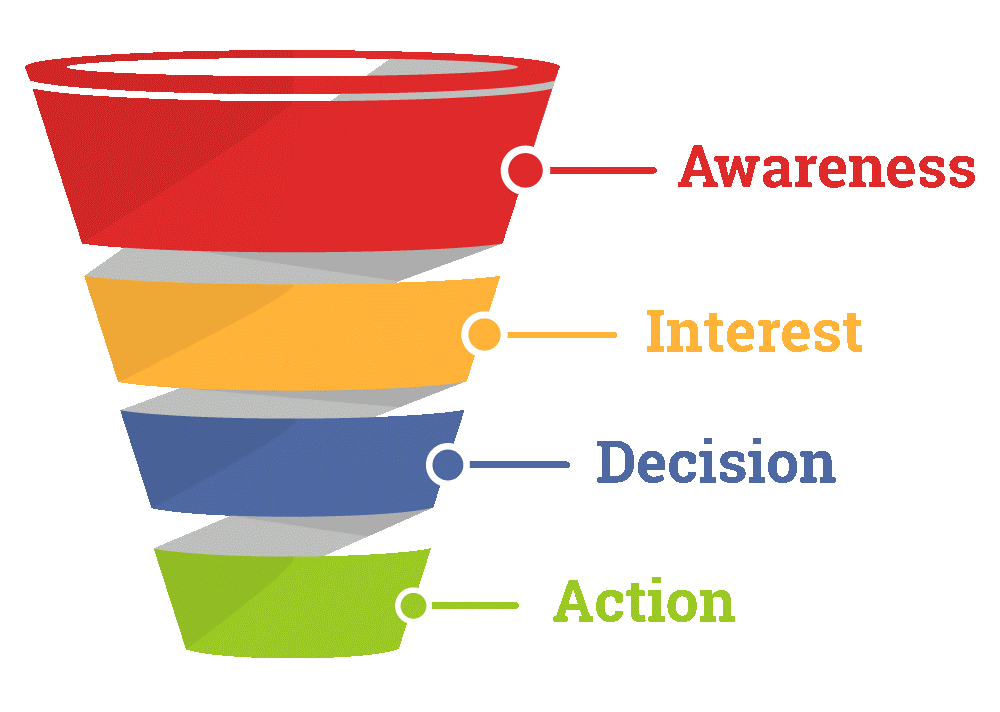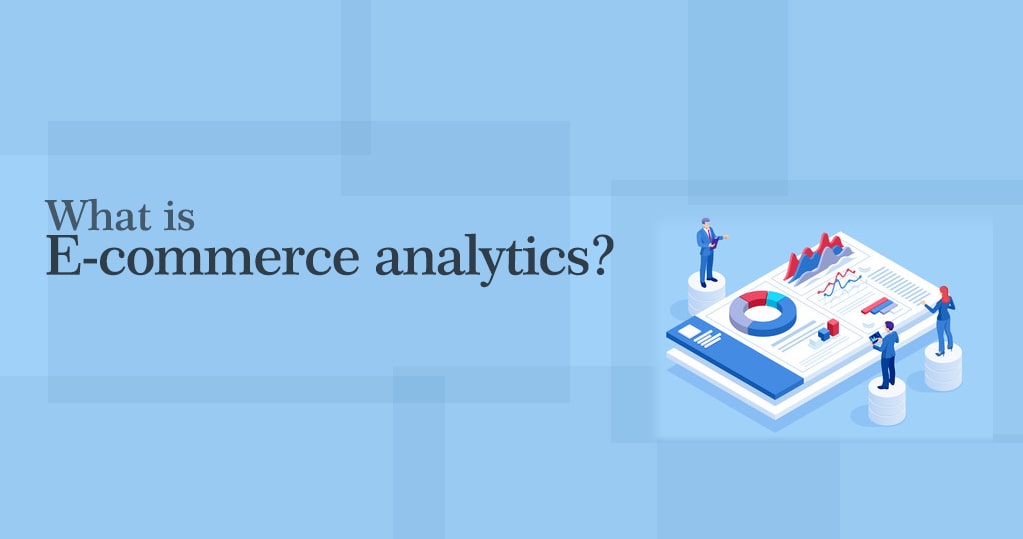Ecommerce analytics deals with the analytical study of your ecommerce website based on various ecommerce parameters regarding sales and purchase of the products and services. In addition, to your website, you can track the analytical reports of different channels and platforms associated with your online business. If you have linked all of these to your website, you can easily track the use cases of all those customers that are navigating to your store via any of these channels.
Why is analytics important for your ecommerce business?
Analytics can be considered as your eyes for the business. The intervention of machine learning in ecommerce is adding insights and offering a wider perspective to look at your business. You don’t have to be attentive all the time, but analytics tools will keep you updated about every possible thing. Unlike the conventional business, you need not wait for months to check the impact of your strategies; rather, you can see it in real-time and understand it better within a span of a week.
The analytical reports refine your knowledge about your business, customer interactions, online trends, preferred ideas, sellable techniques, and much more. This knowledge empowers you with plenty of ideas to stand ahead of your competitors. Leveraging all these ideas, you can optimize your sales, save on the campaign expenses, and improve the conversion rate of your store.
How ecommerce analytics and big data relate?
When big data help you with gathering larger sets of data from all the digital platforms you have associated your business with, ecommerce analytics talks about the science of analysis of that data.
With the help of machine learning, big data allows you to gather more and more details about the business, sales, market, and much more. The algorithm of the analytics tools is designed to understand, analyze the data, and display it in an understandable format. The numbers and data visualization ideas make it easier for analysts, marketing, and sales teams.
You can read our detailed blog on the benefits of big data and ecommerce analytics for the success of your business, on the larger canvas.
Sources to fetch ecommerce analytical reports
The analytical reports are available at all the platforms you will be used for marketing as well as selling your products directly in the market. It’s the content and parameters of the report that will change from platform to platform.
From the perspective of business, the analytical reports of all the platforms mean a lot to you. Your marketing team will be able to analyze and understand them thoroughly. From regular performance reports to ecommerce reports, everything will help you get more clarity about the growth of your business in the market. Ecommerce reports will talk about the money transactions and products/services purchased and returned over the period of time.
Social media:
The social media reports talk about the performance of your posts, products, or services you’ve added in the catalog or the ones that you’ve promoted. If you are doing the paid promotion of your Facebook business page, you can download a detailed performance report of that promotion from the ads manager section.
Facebook analytics:
From the Facebook page insights section, you can see the performance of your Facebook page. The user insights tell you about your target audience, the response on your posts, increase/decrease in the count of your followers, and user engagement. Your Facebook ad manager can give you insights about the performance of your ad promotion.
For more refined search reports, you can link Facebook Pixel to your website and enable the whole of your catalog accessible to the shoppers. This will improve the engagement on your business page as well as on your shop.
Instagram analytics:
There is no detailed separate reports section of the Instagram handle, you can check the performance of each of the posts distinctly, and the insights section will brief you the overall engagement of users and interaction pattern or timing on your Insta handle.
Twitter analytics:
Though Twitter doesn’t allow the insights check for all the users, you can see the tweet reach only. If you for an option of tweet promotion, you can check the twitter cards to view the performance over the set period of time.
LinkedIn:
LinkedIn is often referred to as the social media platform for businesses. Businesses connect on these platforms to interact and grow their network with other businesses as well as increase awareness among customers. LinkedIn is one of the best ways to flourish and establish yourself in the market as a brand. You can view your post wise and weekly user engagement. The featured post ideas and job promotions with LinkedIn easy apply, will surely give you a chance to get details about your customers.
This was all about the interactive marketing platforms that you are using to reach the customers. But, how would you know the source that customers have used to navigate to your store? You need not worry about that, ecommerce tools, ecommerce reports, and enhanced ecommerce reports have it all covered for you.
Builderfly analytics
Before you link your Builderfly store to any other tool, the Builderfly dashboard gives you a basic overview of your sales. Your dashboard will showcase the figure of overall sales, monthly sales, average sales value, and total CLV of each of the customers when you will go into the details.
For a more generalized view of your sales, you can navigate to the Builderfly analytics section. From here, you will get the list of most selling products, low performing products, out of stock, or low in inventory products. To check on advanced parameters, you must link your store with Google analytics.
You must already be knowing Google analytics for tracking the overall performance of your websites as well as a mobile app. The exclusively designed version of Google Analytics for ecommerce business is capable of providing a lot of details about business and customers; you can fetch them, enabling the settings of advanced ecommerce in your store.
How to set up ecommerce tracking with Google analytics?
You can easily integrate Google Analytics into your Web store. You can follow the below steps:
- Sign up on Google analytics with your registered Google account.
- Here, you will be enquired about the Property (website or app) that you like to add. After mentioning the link or APK, you will have to select an option of enabling all the views, select the business industry, and the geographic location of your business. Click ‘Save.’
- Now, navigate to the account settings page, under Property>tracking info>tracking code. From here, you can copy the tracking ID or HTML code that you add in the header section of the core code of them.
- To link your Builderfly store: You need not check on a lot of technicalities, you can navigate the ‘Customize your store’ check for miscellaneous section and update Google analytics code in there.
- To link your website based on any other platform, you can count on the plugins or copy the HTML code in the header section of the source code of your website.
To set up the code on your website, you can take the help of a Google tag manager.
How to enable ecommerce tracking?
If you want to download your website performance report or make any changes to refine your search, you need to navigate to Google analytics for everything. To upgrade your website analytics with the functionality of advanced ecommerce tracking, you can follow these steps :
- Click on the admin section in Google analytics.
- Click on views under view column. Select ‘Ecommerce settings’. Enable it to turn on.
- Click Save.
In your ecommerce data reports, you will be getting transaction details and products for which the transaction took place. The transaction details will include transaction ID, revenue generated, shipping code, total taxable value, and tax charged; additionally, if any. The product-based information includes the product type, category, SKU, price, quantity, discounts applied (if any), promotional charges.
The standard ecommerce analytics report will include an overview, product performance, sales performance, transactions, as well as the time of purchase. If you want to get more understanding about the ecommerce functionalities, you can opt for enhanced ecommerce reports.
Understanding of sales funnel
From the arrival of the user at your store to the conversion, there are several stages before the transaction takes place. Different counts of visitors will leave the conversion cycle at different stages. You can create the different stages of sales funnel for your ecommerce store to keep track of users leaving at each stage. However, the understanding of the sales funnel can help you optimize results.
Sales funnel basically different steps that a customer takes to connect with your business and become your customer. The various stages are awareness, interest, decision, and action with the approach of top to bottom of the funnel. You can refer to the image of the sales funnel for better understanding.

To build your user base, you create awareness about your business at the first stage. From your brand awareness campaigns, the traffic that seems interested in your products and services will navigate to the next section of interest.
Further, based on the search pattern of the customer, you will try to understand the requirement of the visitor. You will display all the products/services of interest with your customer and help in decision making. Once the customer likes the product, they must compare different sites and finally make the decision. At the last stage of action, customers will finally make the transaction through your store to purchase the product.
How to build your sales funnel?
You can build sales funnel for your ecommerce store to know the stage where you are losing more customers and how you can amplify your results. To create your sales funnel, you can follow the steps below:
- Know the behavior of your audience
- Fetch user attention, via social media, infographics, or media content.
- Create the landing page where you want to bring your customer.
- Design email drip campaign or any way to interact with users
- Keep in touch, even if the customer has purchased the products or services from you.
Further, you can analyze the performance of your sales funnel by trying it for fortnight or more. You can make changes, try A/B testing ideas for marketing to refine your sales and improve the conversion rate of your store.
If you have precise goals, you can set them in a Google Analytics account and track detailed analytics reports to optimize sales funnel.
Keep in mind, the market is dynamic, and everything changes with time. Stay updated and keep implementing new ideas.








